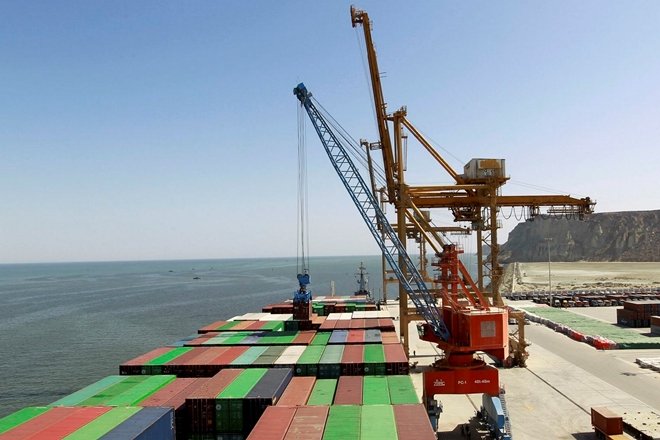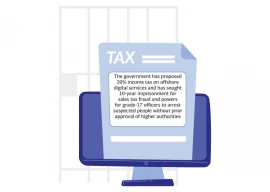
Myth in the sense Pakistan is still struggling to find answers where we lost way to becoming the Asian tiger. What went wrong despite innovative ideas and sound planning since the 1960s. The country has a plethora of policies and frameworks, but is still struggling to find the answer.
Simple in the sense Pakistan is suffering from bad governance, corruption and hidden interests of political, business and other elite groups. Whatever the approach is, the question still stands relevant, what went wrong?
Pakistan’s economy in no dire straits, says Ismail
Political economy in Pakistan can be broadly categorised as privatisation and nationalisation and democratic and dictatorship. Despite all the hindrances and poor conditions, Pakistan has been able to grow at a decent pace.
Especially, the era of 1960s witnessed very rapid and targeted economic growth and development. Gross domestic product (GDP) dramatically touched double digits and the country emerged as a potential global economic power.
Pakistan was enjoying better economic indicators than China and India in the region and many countries across the globe.
One of the prominent features of that era was proactive engagement of the private sector and industry. It enhanced coordination and trust among the stakeholders. Investment became talk of the town. However, this period showed stagnant wages and concentration of wealth in a few hands.
Green revolution, which was presented as a programme to reduce poverty in rural community, also helped in the concentration of wealth in the elite farming community. Seeds of inequality were sown here, which later on turned into gigantic issues.
Bhutto tried to reverse the process and nationalisation was introduced. Nationalisation in the 1970s halted the rapid growth of the economy and trust of the private sector was shattered. Disbelief became apparent and investment from the sector started shrinking at an alarming pace.
Nationalisation weakened the country, which was not able to overcome the trauma of separation from Bangladesh. It was done without proper planning and strategies.
But it is also a fact that 1971-77 was the era of crises at the national and international levels and the global political economy was reshaping itself. Nationalisation policy came to an end with the takeover of General Zia.
Zia started to reverse the process of nationalisation. Although it was difficult, Zia managed to turn around the process and engaged private sector to invest in the country.
Benazir Bhutto further accelerated the process and keenly implemented the structural adjustment programme. Sharif followed suit. General Musharraf also continued the work of previous governments and reinvented liberal ideology in the society.
Unfortunately, the economy could not recover from the setback of the 1960s, 70s and benefit from the rapid adjustments and privatisation programmes from 1988 onwards.
There is also debate on the democratic and dictatorship eras of economic growth and development. One school of thought believes that dictatorship performed better than democracy. Other school of thought negates this notion and challenges the concept of development.
But the question stands, what went wrong with the rapid growth of the 1960s, nationalisation of the 1970s, structural adjustment and privatisation policy of 1988, the 90s, 2000s and onwards. Economy and development is still shaky and directionless.
One unconventional answer is Pakistan’s efforts seem to be more tilted towards ‘revolution’, not ‘reforms’. Furthermore, political economy is more dependent on external factors than internal factors.
Following old steps
Now, Pakistan is again following historical steps for the China-Pakistan Economic Corridor (CPEC), revolutionary not reformative. For five years, we are celebrating CPEC as a success story.
No doubt, CPEC is a transformative initiative. It is also envisioned that it will drastically reduce poverty. However, to realise the perceived objectives, it requires systematic and comprehensive reforms.
Pakistan needs to re-orient its institutional setup in a step-by-step manner. It is a well-known fact that CPEC will enhance the volume of economy, trade and industrial development.
Current capacity of institutions will not be able to bear the extra burden. Capacity and skills of these institutions are not on a par with the required volume. As CPEC is a multifaceted investment, the country needs multifaceted agenda and programme of reforms.
Reforms have to start from skills and labour development. For that purpose, the country needs to re-orient in the short run and redefine in the long run its educational system.
However, to start educational and skills reforms, the government needs to analyse the labour supply and demand gap. It has to map the required skills, the number of skilled persons and labour in each and every sector of the economy.
Mapping of skills and estimates of labour demand would require a thorough study of Special Economic Zones (SEZs), agriculture, eco-tourism and ICT investments. Analysis of SEZs and ICT is crucial as it would provide the basis for the transformation of the economy.
Although SEZs have triggered some purposeful debate, the ICT sector is still lacking the vigour. It requires more efforts to put the horse in front of the cart.
Business community needs to understand that in the international market survival is only ensured by competitiveness. However, the government has to invest in capacity building of businesses. Moreover, there is a need to expand the industrial entrepreneurial base for wider distribution of benefits.
Political constituencies are engaged in defining how they maximise the share for their voters and constituencies. Some are more concerned about availability of information or data.
Liberal economy has its own set of parameters and the Chinese characteristic of development does not completely fit in it. Therefore, there is a need to adopt a blended approach to analyse the initiative.
In this whole context, the observation of Kaiser seems the perfect answer to understand political economy of the country.
He argues the system is designed in such a way that it extracts money/rent from the common and distribute to the elite. So the country is following suit, which will leave no choice other than revolution.
But revolution is not the answer as it is short-lived, destructive and does not have sustainability.
Placing Pakistan on terror financing watch list a bid to destabilise economy: Iqbal
However, the system has reached a point where we have to look for new and innovative ideas to turn the system into more people-centric with inclusive development like “Revo-Form”.
Revo-Form would be a blend of revolution and reforms. Revo will serve to tackle immediate needs and Form would tackle question of long-term issues on a sustainable basis.
The writer is the Head of Centre for Future Policy and Head of Research Coordination Unit, Sustainable Development Policy Institute
Published in The Express Tribune, March 19th, 2018.
Like Business on Facebook, follow @TribuneBiz on Twitter to stay informed and join in the conversation.
1737547089-0/fizza-(82)1737547089-0-405x300.webp)
1723201420-0/BeFunky-collage-(43)1723201420-0-165x106.webp)

1737546499-0/fizza-(81)1737546499-0-165x106.webp)









1737452260-0/Gaddafi-stadium-(2)1737452260-0-270x192.webp)









COMMENTS
Comments are moderated and generally will be posted if they are on-topic and not abusive.
For more information, please see our Comments FAQ